How to Create & Send an Email Marketing Newsletter?
Sending newsletters is a great way to stay in touch with your audience and keep your email marketing activities running smoothly. These newsletters are a must-have for any successful marketing strategy and a valuable contribution to your marketing plan. Your email marketing newsletter can contain pretty much anything you want it to. However, when creating your newsletter, you must prepare ahead of time. You should use a checklist to ensure that everything is in order before submitting your newsletter to your email marketing list.
In this article, I will share everything you need to know about email marketing newsletters and how you can add this necessary ingredient to your email marketing campaigns. Let’s jump right into the details!
What is an email newsletter?
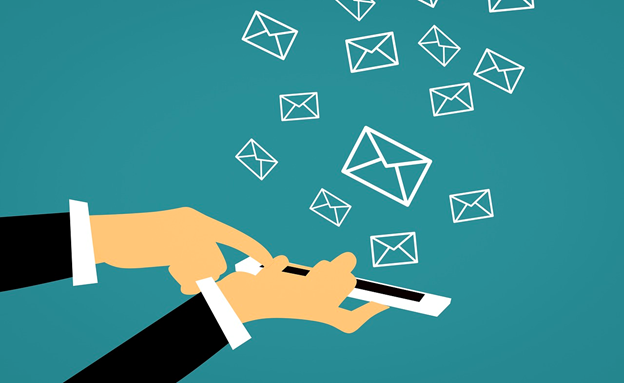
An email newsletter is an email that is sent out in a regular manner (e.g., weekly or monthly). It can be in HTML form or plain text. Email newsletters are a common tool for companies, as you can probably tell from looking at your inbox.
As part of their content marketing plan, 85 percent of B2B marketers, for example, routinely send email newsletters.
Newsletters usually provide subscribers with insightful content (they aren’t called newsletters for nothing). It can concentrate on a single topic or include material from multiple topics. Newsletters are distinct from other forms of marketing communications, such as autoresponders (such as welcome emails), transactional emails, and triggered/automated emails.
They do, however, overlap sometimes. Each has an important role to play in any effective email marketing campaign, so newsletters should be used to supplement rather than substitute these emails.
What are the advantages of email newsletters?
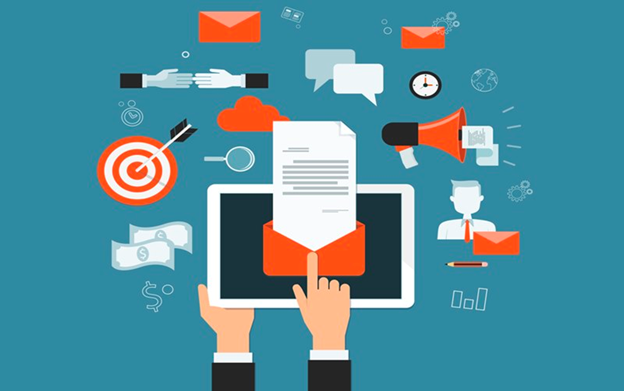
-
Stay connected with subscribers on a daily basis keeps you at the forefront of their minds. This raises the likelihood of them being customers.
-
It is much less costly than conventional media (such as print products)
- The medium is easier to use and fast to deliver messages. It will be good to use the help of an email newsletter software.
-
You can actively monitor your progress. This helps you to adapt your content to consumer demand while still monitoring your ROI.
- Your subscribers can receive email newsletters from you no matter where they are, thanks to their smartphones.
What are the disadvantages of email newsletters?
-
The tactile experience of a print message is lost.
-
People don’t always open your email newsletters.
-
There are a lot of other email newsletters in people’s inboxes, so the competition for attention is fierce.
Given the drawbacks, the persuasive claims in support of sending email newsletters are the reason why businesses should have a newsletter strategy for their email marketing. The most convincing of these is undoubtedly cost-effectiveness since they are relatively cheap to send. Besides, email marketing generates an average ROI of $38 for every $1 spent.
How to create and send email newsletters

Start with your customers
Before you consider the ‘how’ of sending an e-newsletter, consider the ‘who’ — the database of people with whom you want to connect by email. To send email newsletters that produce sales, you need to have the most relevant database possible.
Many companies now have their contacts’ email addresses tucked away somewhere in an Excel spreadsheet – or, more possibly, spread through several very messy spreadsheets. If this fits you, it’s a good idea to merge all of your files into a single clean, well-organized file before sending newsletters to any subscribers.
You should also make sure that your subscriber database is as well segmented as possible – ideally, it should have a field that allows you to flag and classify people as leads, current customers, past customers, and so on. It’s up to you about how far you take this — for example; you might segment your email list to the nth degree, storing details about individual product orders, demographics, and so on.
Read more: 5 Most-used Customer Segments in Emails for Retail Stores
In any case, the aim of this step is to get your data in order so that you can send a relevant message to the right person at the right time. When you’re done with your data planning, you should have a spreadsheet with all of your cleaned, segmented data in one place. This is your mailing list, which you can now upload to an email marketing app (more on that later).
Create a content plan and newsletter schedule
The next step is to schedule your email newsletters. It’s a good idea to build a newsletter plan that specifies details such as:
-
What material you intend to include in your email newsletters
-
Who you intend to give them to
-
And when you plan to send them.
You can then use this schedule during the year to ensure you have all of the requisite content ready to go well ahead of each newsletter delivery. And, since you’ll have neatly segmented your data ahead of time (at step 1), you’ll be sending your beautiful and relevant newsletters to the right group of contacts.
Create customer-focused content
Traditional newsletters (such as print newsletters) appeared to be more company-focused. They often included company updates, new product launches, awards, and other uninteresting information. The world has changed.
Put yourself in your audience’s shoes. What kind of information would you like to see if you subscribed to your company’s newsletter? And what would prompt you to click the ‘unsubscribe button? The best email newsletters we’ve seen (and those that typically do better) have information that is relevant to their audience.
Frequently, it is information that is:
- Useful – for instance, tips or links to “how-to” blogs, tutorials, or guides. Well-designed - Keep it visually pleasing and readable.
Emails with a lot of text just feel like work these days. (Learn more: 10 Best design tips for your newsletter emails)
-
Timely - Consider all of the marketing surrounding the Super Bowl, Coachella, or Christmas. There’s an easy explanation for this: people are curious!
-
Newsworthy – for instance, a recent development in your industry might make for compelling content for your audience.
-
Offers - Special deals, promotions, and freebies can include sales, discounts, or even digital freebies like ebooks and webinars.
-
Events – If you have an upcoming online or offline event, let your subscribers know about it and how they can sign up!
-
Personalized content – if your email software allows it, you can submit content based on the reader’s interests and preferences (think of Amazon’s ‘Products we recommend’ newsletters, which are based on customer purchases).
It’s a technique that works – studies show that personalization increases click-through rates by 14% and conversions by 10%.
Choose the right app to send your newsletters
Many small business owners already believe that sending email newsletters entails compiling a list of email addresses and then pasting them into the BCC section of a cumbersome-looking email in Gmail.
This is a very time-consuming method; it is also extremely inefficient, because:
-
It does not allow you to submit newsletters that are well-designed in appearance.
-
It prevents you from reliably calculating key metrics such as open rates and click-throughs.
-
It increases the risk of your email being flagged as spam by spam filters (email programs usually dislike messages that are bcc’d to a large number of people or contain large embedded images).
-
It means you’re not taking advantage of advanced email marketing functionality like autoresponders or split checking.
As a result, it is much easier to use a dedicated email marketing tool to send your newsletters — one that allows you to send ‘HTML newsletters.’ HTML newsletters, as the name implies, make use of HTML code to display text and graphics. This allows the content to be shown in an appealing manner.
I’ll review the best email marketing apps for sending newsletters in the last section of this article.
Create a newsletter template
After you’ve decided which email marketing app to use, you’ll need to figure out how your newsletters will look. The good news is that most email marketing apps provide a variety of templates you can use as a starting point for your email newsletter design. Once you’ve decided on one, you can customize it with a drag-and-drop editor to ensure that your newsletter is consistent with your brand’s aesthetics.
This can then be saved and reused as your own template for future newsletters. If your design skills fall short, you might want to consider hiring a designer to create your newsletter template. However, In most cases, you should be fine with modifying an existing template from the library of your email marketing app.
Add your sign-up forms to your website and social media profiles
You can add sign-up forms for your mailing list to your website with all email marketing tools. Typically, this involves embedding a snippet of code and inserting it as an HTML block on your website.
Make sure you do this because it is one of the most effective ways to grow your list. To maximize the number of signups to your mailing list, you should have a sign-up form for your newsletters on every page of your website, and you might also suggest using pop-up boxes on some pages of your site.
However, be wary of pop-ups on mobile devices because Google will penalize sites that use pop-up boxes in a way that adversely affects usability.
Don’t make a boring form and add it to your web. Make sure they clarify the advantages of joining your mailing list — for example, instead of using a generic ‘join my mailing list’ call-to-action, explain what kind of awesome content your web visitors may expect to receive upon subscription.
Sign-up forms or buttons will also be added to your social accounts, depending on the social media sites you use. If this is not possible, have a prominent connection to a URL where people can join your email list.
Use landing pages
If you use online ads to expand your mailing list, make sure the landing pages you use are as convenient as possible. When anyone clicks on your ad, they should be taken to a page that invites them to do one thing: sign up for your mailing list.
Poor landing pages often lack a navigation bar and links to other sections of the website. All should be geared toward drawing a visitor’s attention to a sign-up form. Some email marketing tools have a built-in landing page creator; however, if your email marketing tool does not have this feature, you can create them with third-party software such as Instapage or Unbounce (these can be quite expensive, however).
Read more: 11 Tips to Optimize Landing Page
Use autoresponders and marketing automation.
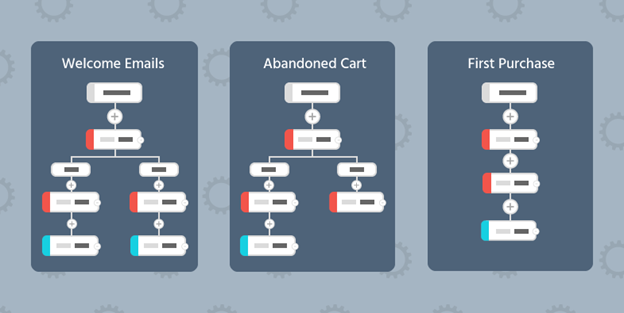
Autoresponders or drip campaigns are emails that you can pre-program in advance so that when someone joins your email list, they automatically receive messages you want to send them. This is a perfect way to send email newsletters.
A subscriber, for example, would receive a welcome message directly after signing up, a special offer one week later, an invitation to follow your company on Facebook two weeks later, and so on. Autoresponders, when used creatively and carefully, allow you to craft a plan that keeps your email subscribers engaged and can boost sales for your business.
Email marketing app providers have recently taken autoresponder functionality to a new and much more advanced level, offering marketing automation functionality that allows you to use user behavior to trigger emails.
For instance, you can set up your email marketing app to send a follow-up email automatically if a subscriber -
- Buys a product
- Opens a specific email
- Clicks on a specific connection
- Visits a specific website
- Etc.
Read more: Ecommerce Email Marketing Automation: Guide to Start!
Make it easy to share your newsletters
Most email marketing tools allow you to include “forward to a friend” or social media sharing buttons in your newsletters. Use it! It means your content and deals have a greater chance of being noticed by people who aren’t on your mailing list, and it can also result in new people joining your email list via word-of-mouth.
Measure your email’s performance
Most email marketing tools have robust reporting functionality; for example, after sending a newsletter, you will be able to view statistics that will enable you to assess the success of your campaign.
The key metrics you usually need to look at are:
- Open rates
- Clickthrough rates (CTRs)
- Unsubscribe rates
This data can be used to help you run better newsletters that produce more conversions in the future.
As an example:
- You will find that a certain form of subject header gets higher open rates and creates similar ones in the future.
- You can discover that buttons generate more clicks to your site than text-based links (or vice versa).
- You may discover that emails about particular topics result in a high number of unsubscribes — and you should avoid sending out that form of content again.
Use this information to boost the performance of your next email marketing campaigns.
Best apps to send email marketing newsletters
AVADA Email and SMS Marketing
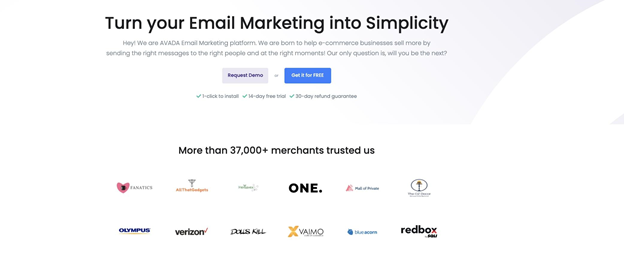
AVADA Email Marketing Automation is a robust email marketing newsletter tool that needs no technical knowledge. You can easily develop customized email newsletters with interactive elements including videos and photographs using its email editor.
Alternatively, you can get started right away by selecting one of the platform’s ready-made models from the template library. To help you generate leads, the tool also includes subscription forms. You can also receive accurate reports and analytics to help you make data-driven decisions.
Finally, AVADA Email & SMS Marketing allows you to build or use premade automation workflows to automate your email campaigns. This app has a Free Forever package for up to 1,000 subscribers, and 15,000 email sends. The paid plan starts at $9 a month for 1,000 subscribers, unlimited emails, and all advanced features.

SendInBlue

You don’t need technical expertise to build well-designed email newsletters with SendInBlue. The drag-and-drop functionality, HTML editor, and extensive template gallery provide you with the tools you need to build visually appealing emails.
You can use simple builders to personalize the design of your newsletters, pick the form fields for your subscription form, and create a number of ways for your visitors to opt in.
SendInBlue’s automation pipeline is versatile, allowing you to send various emails based on unique actions taken by your subscribers. SendInBlue allows you to send 300 emails every day (6,000 emails per month) for free, and pricing for 10,000 emails begins at $25 per month.

GetResponse

GetResponse provides features ranging from a variety of starter features to business features such as webinars and landing pages. Hosting landing pages in GetResponse allows you to collect email subscribers for your newsletter. With their drag-and-drop email editor, section contacts tool, campaign builder, and A/B testing tool, GetResponse also helps you to create well-designed email newsletters.
You can build an email to fit your brand and send emails more effectively with a wide range of pre-made templates to choose from. GetResponse does not have a free tier, but they do offer a 30-day trial, and pricing begins at $15 per month.
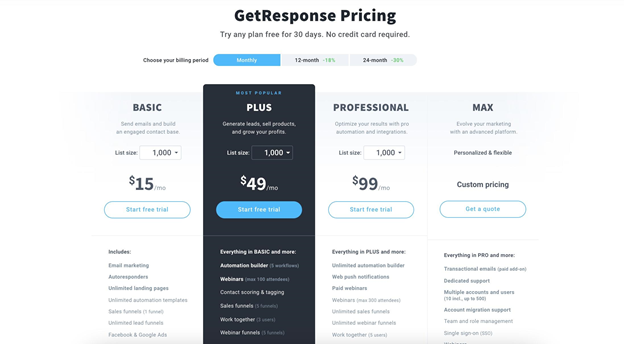
Read more: Top 9 Best Free Newsletter Softwares
Final words
That’s it! I hope that this article has provided you with valuable information about email marketing newsletters. Please feel free to leave comments below for a further discussion on this topic!
New Posts








